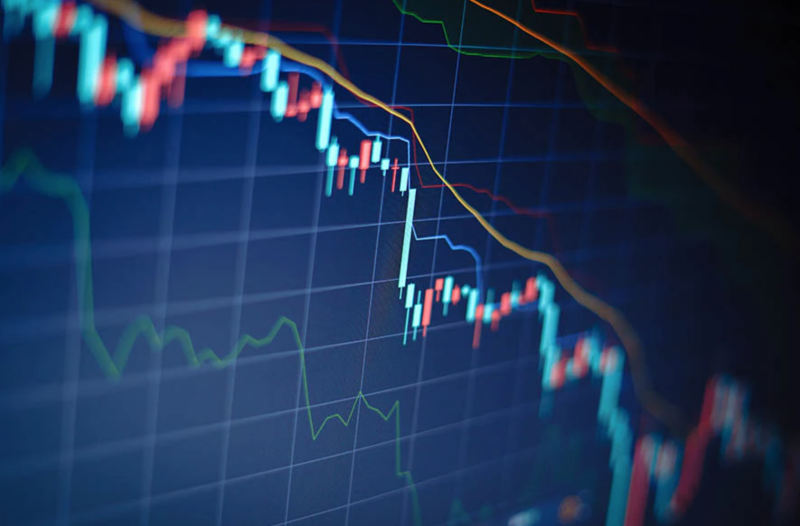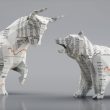by Liz Ann Sonders and Kevin Gordon, Charles Schwab & Company Ltd.
Rising inflation, rate hikes, supply-chain problems and the Russia-Ukraine war have contributed to growing recession fears. While recessions are impossible to predict, we think the risk of one—sooner rather than later—has picked up.
We think the risk of a recession—sooner rather than later—has picked up. Intense market volatility, sour consumer confidence, and downward pressure on income growth all point to an economy that is slowing down. U.S. gross domestic product growth (GDP) contracted at a 1.5% annualized rate in the first quarter of 2022 (note that early GDP data is always subject to revision in later quarters). That was the first decline since the second quarter of 2020. While the trade and inventory components were largely responsible for the negative figure, the trend in consumer spending (which makes up about 70% of the U.S. economy) slowed throughout the quarter.
What a recession is (and isn't)
The official arbiter of U.S. recessions is the National Bureau of Economic Research (NBER), which defines recession as "a significant decline in economic activity that is spread across the economy and that lasts more than a few months." The four primary components that the NBER looks at to determine whether the United States is in a recession are—not coincidentally—the four indicators that make up The Conference Board’s Coincident Economic Index (CEI):
- real personal income less transfer payments;
- nonfarm payroll employment;
- wholesale and retail sales;
- and industrial production.
As you can see in the chart below, the CEI tends to track the business cycle in real time, peaking at the start of recessions and finding a trough at the end of them.
Coincident Economic Index

Source: Charles Schwab, Bloomberg, as of 4/30/2022.
Barring some exogenous, unexpected event that sends yet another shock through the global system, we think the next recession will be a bit more (for lack of a better term) natural: The Fed hikes rates—sometimes aggressively—to combat inflation and/or growth that’s overheating, unemployment increases, the labor market weakens, incomes fall, and overall growth slows.
Look to the leaders
Whenever discussing the LEI, we always like to remind investors that the indicators' trends are just as important—if not more important—than their levels. Individual components shouldn't be looked at in isolation, and their strength in level terms often isn't enough for a comprehensive analysis of inflection points, even in the run-up to recessions. As an example, below are snapshots of the LEI's level and trend in the months prior to the start of the 2020, 2007, and 2001 recessions.
Starting with the pandemic-driven recession in 2020, you can see in the first table below that most indicators were at either strong or fair levels. Given the rapidity with which the virus drove the world into a recession, trends within the LEI's components were not particularly weak—but to be sure, there was more red and yellow in the trend column vs. the level column.
2020 recession

Source: Charles Schwab, Bloomberg, The Conference Board.
2007 recession

Source: Charles Schwab, Bloomberg, The Conference Board.
2001 recession

Source: Charles Schwab, Bloomberg, The Conference Board.
Inseparable
Stocks tied to the economy

Source: Charles Schwab, Bloomberg, as of 3/31/2022.
It also doesn't bode well for stock market performance. As you can see in the chart below, high allocations to stocks (at extremes) historically have tended to lead to weak returns in the subsequent 10 years (shown by the yellow line).
Households favor stocks

Source: Charles Schwab, Bloomberg, 12/31/1951-03/31/2022.
©Copyright 2022 Ned Davis Research, Inc. Further distribution prohibited without prior permission. All Rights Reserved. See NDR Disclaimer at www.ndr.com/terms-of-service. For data vendor disclaimers see www.ndr.com/vendor-info. Equity allocation (includes mutual funds and pension funds) is % of total equites, bonds and cash. Indexes are unmanaged, do not incur management fees, costs and expenses, and cannot be invested in directly. Past performance is no guarantee of future results.
Perpetual motion
Recession-like oil spike
![Inflation-adjusted crude oil prices have surpassed their 24-month average by more than 60% lately, a move that historically has preceded recessions.]](https://www.schwab.com/learn/sites/g/files/eyrktu1246/files/Real%20Bloomberg%20Oil.png)
Source: Charles Schwab, Bloomberg, as of 5/31/2022.
Y-axis is truncated for visual purposes; the actual peak was 242%.
In sum
Copyright © Charles Schwab & Company Ltd.















